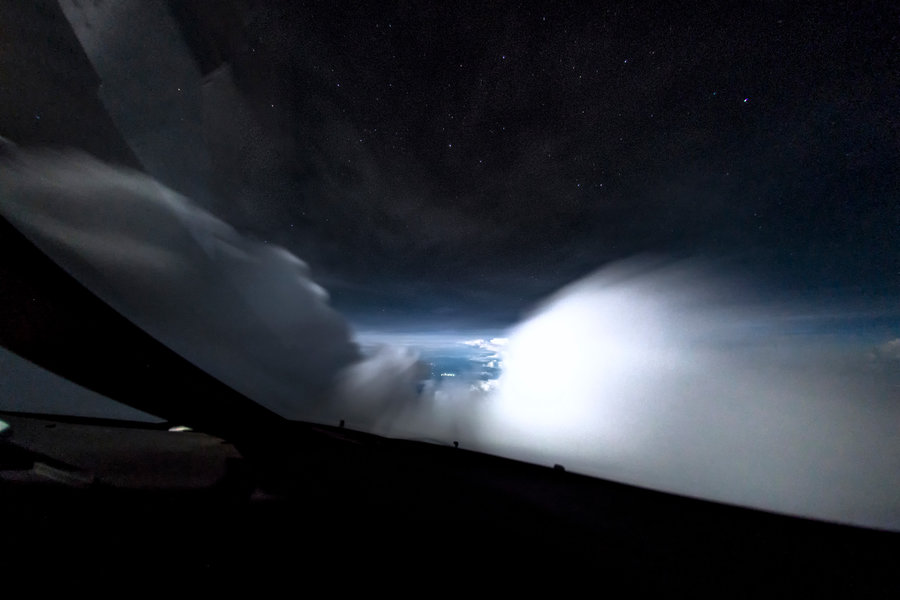With the slightest touch (3 minute read)
8 December 2017Even though modern airplanes have no trouble with flying through turbulence or most of the clouds aloft, pilots will always do their best to avoid any unnecessary exposure to the elements or shaking whenever we can. Not only because it can be uncomfortable, but also because with the knowledge that the copilot (me) is sent back to clean the messy kitchen afterwards. Reason enough to avoid the coffee and food from decorating the ceiling and walls whenever we can.
Using the powerful weather radar we create an overview of the weather ahead on medium and long-range and can even examine the internal structure of clouds to judge what's going on inside the and see if they are a threat or not.
But the most important instrument is still the Eyeball Mk I. In other words; simply looking outside through our windows and at the weather in front of us.
Sometimes we're lucky and the towering tops of the clouds are clearly defined, either lit by the brilliant sunlight or soft silver moonlight.
After Air Traffic Control has been advised about our need to deviate a few miles left or right of track to avoid weather, we have the freedom to steer our bird along the obstacle course that consists of constantly changing mountains and valleys of white moist.
Only small corrections are needed and can be done by telling the autopilot to fly a few degrees further left or right.
Just as effective, but much more fun is simply disconnecting the autopilot and flying the airplane gracefully by hand, banking slightly left and right until we're clear of weather again.
No matter how many hours in a logbook or how many stripes one has on the uniform; there is always a sense of joy when handling a big jet like this.
Eyes looking outside, one hand on the control yoke, the other placed on the thrust levers and feet on the rudder pedals. Only holding the controls with the slightest touch, I move the yoke with two fingers only a few degrees to the left. Immediately, the 747 responds by starting the ever slightest bank in the same direction until I place the yoke in the middle again. A tiny bit of extra thrust to make sure we don't lose any airspeed, the engines respond immediately and without objection when I command 2% more of them.
Flying with nearly 950km/h (or 270 meters per second), we only need the smallest corrections to find our path between the clouds.
At moments like those, it doesnt matter if you fly a few hundred passengers or a few hundred pallets of cargo. All that matters it the cockpit you're in and the world outside of those windows that moves by at incredible speed.
When flying along the clouds, it immediately reminds me of the countless of hours I sat in small airplanes, learning the basics of flight. Now, over 20 years after my first actual flying lesson, flying airplanes has no secrets to me any more and has become second nature, just like driving a car.
Its easy to fall into the trap and taking it all for granted. But it's these moments that I remind myself of the fact that I am one of the few privileged people in the world that can feel and experience the sensation of flying a 747 along the clouds far above the ground, in the company of eagles.
Note: This photo was taken with a full moon illuminating the clouds over the South Chinese Sea between Singapore and Hong Kong, with the autopilot on, needless to say.
